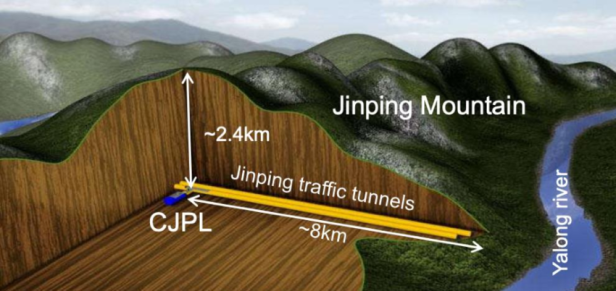Deep, deep underground, Chinese researchers are trying to uncover the secrets Dark matter Get on track. Makes an invisible object 80 percent matter in our universe, but so far only indirectly demonstrated. with China Jinping Underground Laboratory II (CJPL-II) That has to change.
2,400 meters below the surface of the earth
Construction of the China Jinping Underground Laboratory began in 2010, followed by construction of the CJPL-II expansion in 2014, which was completed in December last year. 2,400 meters below the surface of the earth Dark matter can be detected without the results being corrupted by cosmic rays. 330,000 cubic meters of material It was dug for this.
There is also a similar observatory in Europe: 1,400 meters below the Italian observatory Gran-Sasso-Massive There are also researchers looking for individual particles of dark matter. There are already signs of dark matter, but the particles have yet to be directly detected.
➤ Read More: How researchers search for deep matter in space and mountains
Dark matter does not interact with other matter. When a particle hits the Earth, it simply passes through the planet. There, 2,400 meters inside the planet, are dark matter detectors The astrophysical xenon experiment (PandaX) and the China Dark Matter Experiment (CDEX) record the particles.

CJPL Laboratory at Mt.
© Creative Commons
PandaX uses the noble gas xenon in liquid form. When dark matter particles collide with xenon atoms, they are created Flashes of lightSensors can detect CDEX, on the other hand, uses a germanium detector that generates electrical signals when the particles hit it.
Look for WIMPs
Researchers are looking for what is called WIMPs (Weakly interacting massive particles) – Hypothetical particles that can form the theme. Although these WIMPs do not interact with other particles, in rare cases a WIMP directly hits a nucleus – such as a xenon nucleus. This can be recorded by sensors.
However, these particle detectors are very sensitive to any form of radiation Cosmic background radiation – can trigger them. That is why they are located deep underground in thick metal boxes. The The CJPL-II observatory will also clarify the question of whether dark matter actually consists of WIMP particles or of yet-to-be-discovered, subatomic particles.